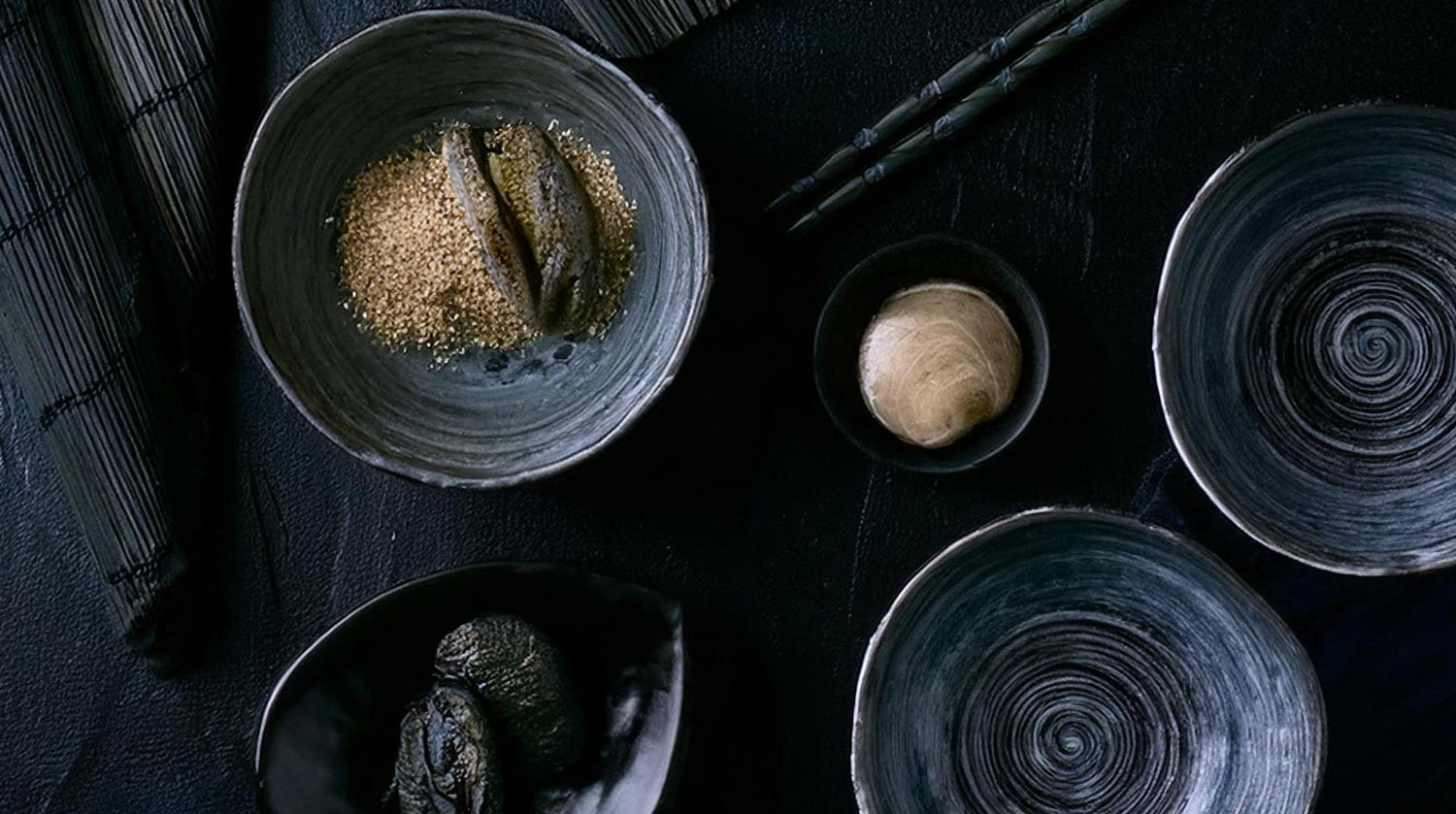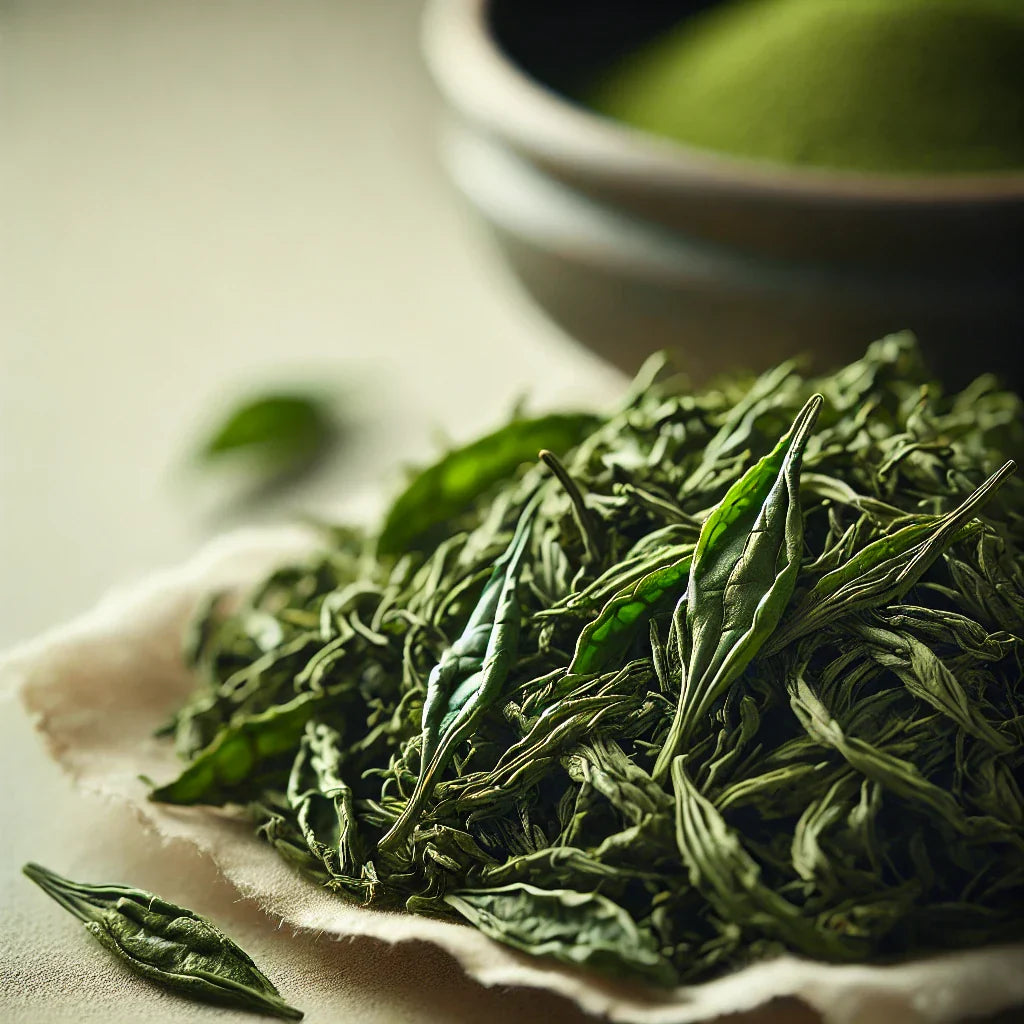Nerikomi the art of Japanese ceramics and its fascinating history
The technique of nerikomi —also known as neriage —is one of the most artistic and expressive methods of Japanese ceramics. Its origins stretch back into the history of pottery, marked by the dedication of Japanese masters and the pursuit of perfection. But what lies behind this technique, and which personalities and places have shaped it? Let's delve deeper.
The origins of Nerikomi
The roots of nerikomi can be traced back to the Edo period (1603–1868) in Japan. During this era, the art of ceramics flourished, as the influence of Zen Buddhism inspired many artists to create their works as expressions of harmony and nature.
The technique itself is likely inspired by Chinese ceramic art, particularly the marbling technique (known in China as "jiao tai"). Japanese ceramists adopted this approach and developed it into a unique method that reflects the Japanese pursuit of perfection and aesthetics. The term nerikomi refers to the practice of mixing colored clay and creating intricate patterns.
How does the Neriage technique work when turning on the potter's wheel?
In the Neriage technique, different colored clays are artfully combined. First, a light clay is usually selected, which is then colored with special coloring agents to achieve bold or subtle color gradations.
The dyed clay pieces are placed side by side and arranged to create a desired color pattern. These combined clay masses are then further processed on the potter's wheel. Through the spinning, the colors naturally blend and twist, creating artistic, marbled patterns. Interestingly, these patterns appear not only on the outside, but permeate the entire object—the vibrancy of the grain is preserved both inside and out. This creates vessels or objects in which each individual piece has a unique character—and the play of color and form is at the heart of this special Japanese craft.
Why porcelain is preferred for Nerikomi – and what challenges it brings
Porcelain is far more than just a material in Nerikomi – it is the first choice for many ceramic artists dedicated to this technique. The main reason for this lies in the exceptional clarity and purity of porcelain: Its light, almost luminous white color allows the often delicate, colorful patterns to stand out particularly brilliantly – much more so than with darker clays. The intricate designs created in Nerikomi remain clearly visible on both the inside and outside of a vessel – no pattern disappears into the material.
But as perfect as porcelain may appear, it also presents real challenges. Unlike ordinary clay, it is significantly more difficult to work on the potter's wheel: It is less sculptural, prone to cracking or warping, and therefore requires patience, a keen sense of touch—and, above all, experience.
Many artists therefore resort to the construction technique: Multi-colored clay strands are artfully interwoven or rolled into mosaic patterns. These patterns are then cut into slices perpendicular to the rolling direction and arranged like small building blocks on a mold – often made of plaster. After they have completely dried, each surface, inside and out, is carefully smoothed with sandpaper and steel wool. Only through this fine polishing does the vibrant colors and clear lines come into their full radiance.
The fact that differently colored clays blend so harmoniously in Nerikomi is due to the fact that they usually come from the same base material: pure porcelain or very light stoneware. This ensures that all colors and components behave similarly during firing—no tension, no cracks, no unpredictable differences arise.
Which ceramic objects are often made using the neriage or nerikomi technique?
Since their origins, the neriage and nerikomi techniques have held a special fascination for ceramic artists—they allow simple clay to be transformed into unique patterns and color combinations by artfully layering different colored clay masses. The result is ceramic objects that are not only functional but also visually extraordinary.
The most common examples include:
Tea bowls (Chawan): Particularly prized in the Japanese tea ceremony, these bowls feature intricate, layered swirls, flowing color gradients, and fine line structures running through the entire bowl's surface. Each Chawan is unique, creating a special effect both in the hand and on the eye.
Cups and sake vessels: Small drinking vessels provide an ideal surface for nerikomi patterns. The combination of shape, feel, and decorative depth makes each piece a work of art in its own right—often, new details in the color gradient are discovered while drinking.
Vases and ikebana vessels: This is where the possibilities of the technique come to the fore. The dynamic bands of color and marbled surfaces evoke landscapes, streams, or cloud movements, artfully enhancing floral arrangements.
Plates and serving platters: Functional ceramics such as dinnerware also benefit from the Nerikomi technique. The interplay of shape and pattern makes each piece a focal point on the table and clearly distinguishes it from industrially produced mass-produced items.
Incense burners, boxes, and tiles: Nerikomi is often used to create special accents, especially on small, everyday objects. The detailed patterns significantly enhance the aesthetic value of these everyday objects.
Whether for everyday use or as a collector's item, ceramic works made of Neriage or Nerikomi always demonstrate the connection between technical mastery and the free, often unpredictable play of the material. It is precisely this tension that creates their special appeal and ensures that each piece tells its own story.
Important properties of different colored clays for Nerikomi
To successfully create the artistic patterns of Nerikomi, selecting the right clay is crucial. Not just any combination of different colors is suitable—rather, the clays should share some basic similarities.
Particularly important:
Similar chamotte: The clays should contain a comparable proportion of chamotte so that they react evenly during shaping and firing.
Same drying shrinkage: Different shrinkage rates during drying can lead to stresses and cracks that destroy the pattern.
Same firing shrinkage: Even during firing, the clays must not shrink differently to avoid warping or breaking of the finished pieces.
Related water absorption capacity (CTE): Clays with similar CTE ensure that the final product remains stable and does not crack due to different moisture absorption.
The different clay colors work together harmoniously during processing and enable the characteristic, flowing patterns of the Nerikomi technique.
Materials and colorants used in Neriage
To create the striking patterns of Neriage, ceramicists begin with a light, fine-grained clay as a base. This base tone is then colored with ceramic dyes or colored clay pigments—often referred to as "body colorants." The choice of colorants opens up a wide range of possibilities: from deep black and anthracite to bright red and yellow, to soft peach and clear white. Attention is paid not only to the visual effect, but also to compatibility in terms of shrinkage behavior, firing temperature, and surface texture.
The different colored clays are usually arranged side by side, depending on the desired color gradient. The characteristic patterns are created when these layers are bonded together by twisting, layering, or rolling – sometimes on the potter's wheel, sometimes by hand. Some artists go even further and incorporate earthy natural tones or use oxides to create a connection to nature – a design principle deeply rooted in Japanese aesthetics.
Great care is taken to ensure that all clays used have similar properties—particularly with regard to fireclay content, drying shrinkage, and firing shrinkage. This is the only way to avoid cracks or deformation during firing. This delicate balance ensures that the finished piece is not only visually impressive, but also does justice to the craftsmanship tradition and technical precision.
Technology and its masters
Nerikomi was refined over centuries by skilled potters. This technique experienced a renaissance, particularly during the Meiji period (1868–1912) and the subsequent modern era, as it allowed for both traditional and experimental approaches.
Why is working with Neriage and Nerikomi so time-consuming – and is it even worth the effort?
Both neriage and nerikomi require exceptional patience and precision. The process involves carefully layering or blending different colored clays, meticulously cutting and arranging them to reveal the finest patterns. Every step—from preparing and coloring the clay to molding and shaping, to repeated drying and firing—requires steady hands and a trained eye for detail.
This technique is particularly labor-intensive because even the smallest mistakes can ruin the desired pattern or cause the piece to crack in the kiln. Artists often spend many hours, sometimes even days, completing a single piece—always keeping a watchful eye on humidity levels and timing.
Despite the complexity and slow pace of work, the rewards are extraordinary. The finished works exude a poetic beauty that is hard to achieve with other techniques—a harmony of color and form that seems as if nature has been captured in motion. For those dedicated to this art form, each completed piece is a testament to skill and vision—and makes the effort invested more than worthwhile.
Final touches: Make colors and patterns shine
After the pieces are completely dry, a crucial final step follows: refining the surfaces. Both the inside and outside are carefully polished with fine sandpaper or steel wool. This patient process smooths the clay and allows the vibrant colors and intricate patterns to stand out even more clearly. The result? The characteristic lines and tones appear significantly more intense, making each Nerikomi piece a true feast for the eyes.
Famous master potters and studios
-
Tatsuzo Shimaoka (1919–2007)
- A master of the Japanese mingei (folk art) style, who also worked with textures and clay patterns similar to the nerikomi technique, Shimaoka combined traditional methods with modern aesthetics and gained international recognition.
-
Makoto Yabe (1947–2005)
- A Japanese-born, US-based artist known for his use of nerikomi techniques, his works combine Japanese tradition with Western modernity.
-
Yasuko Sakurai
- A contemporary ceramist specializing in nerikomi. Her works, often inspired by natural forms, are exhibited in galleries worldwide.
-
Euchius Yamazaki
- An emerging master from Kyoto known for his exceptional geometric Nerikomi patterns.
Famous potteries and regions
Japan is known for its rich pottery traditions, and some of the most famous pottery regions have also influenced Nerikomi:
- Kyoto : The city of Kyoto, the historical center of Japanese art, is home to many ceramicists who incorporate Nerikomi techniques into their works.
- Arita (Saga Prefecture) : Famous for porcelain, this region has produced ceramists who combine modern and traditional techniques.
- Mashiko (Tochigi Prefecture) : This region is known for its Mingei movement and is home to artists who experiment with clay colors and patterns.
The philosophy behind Nerikomi
Nerikomi isn't just a technique—it's a philosophy. The art of combining different colors and patterns reflects the harmony of nature. Each piece is unique, an expression of the artist's soul and their connection to the elements of earth, water, air, and fire.
The patterns in Nerikomi ceramics are often inspired by nature: flowing streams of water, delicate flower petals, or the gentle waves of the wind. This connection to the environment makes Nerikomi a deeply spiritual art form.
Modernity: Nerikomi in the present day
Today, nerikomi is appreciated not only in Japan but worldwide. Contemporary ceramicists experiment with new color combinations, patterns, and techniques to further develop the art. Nerikomi has become particularly popular in Europe and the USA through workshops and exhibitions.
Discover and experience Nerikomi
Nerikomi is not just a technique, but a window into Japanese history, culture, and philosophy. It combines craftsmanship with art and tells stories as old as time itself. Whether you're an art lover, a collector, or simply curious, Nerikomi invites you to immerse yourself in the world of Japanese ceramics and experience its poetry.




Leave a comment
This site is protected by hCaptcha and the hCaptcha Privacy Policy and Terms of Service apply.